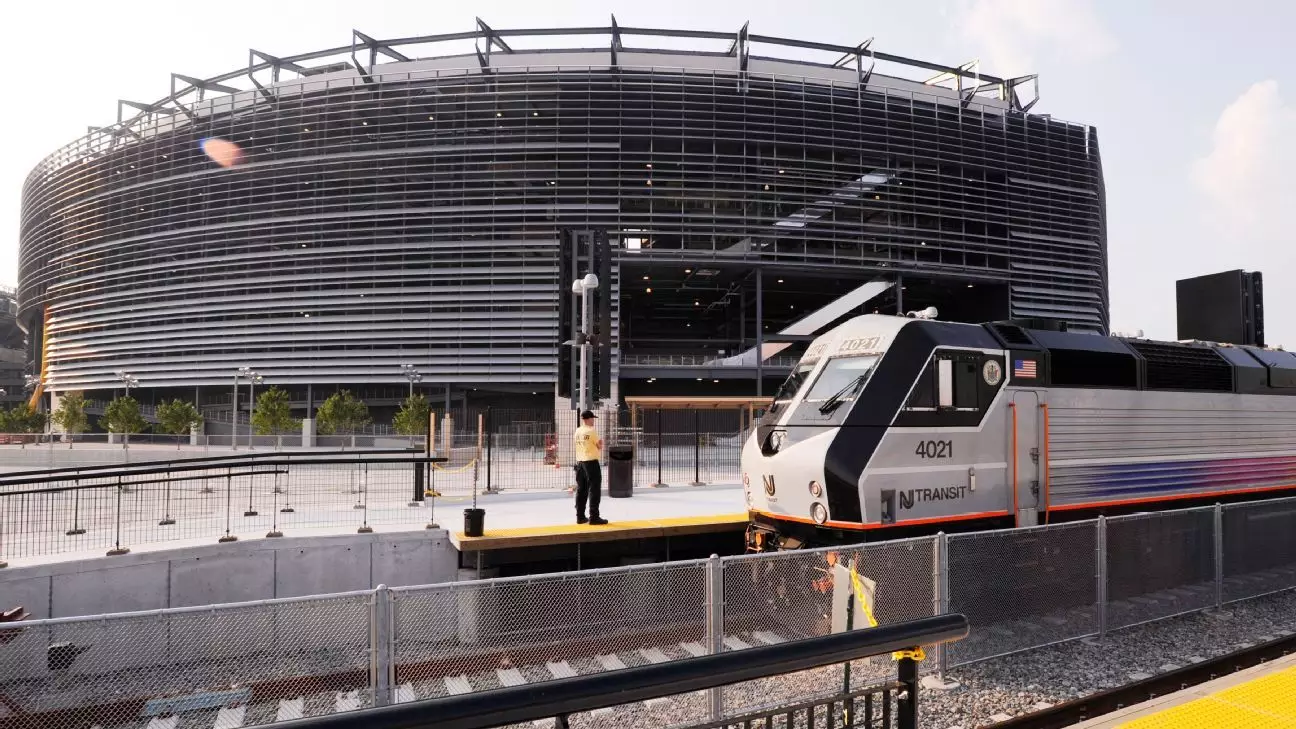As excitement builds for the 2026 FIFA World Cup, the Northeastern United States—specifically, the collaborative efforts of Boston, New York/New Jersey, and Philadelphia—has positioned itself as a single megasite for this monumental event. The trio aims to create a seamless experience for an estimated 6.5 million anticipated attendees by leveraging Amtrak services, which operates along the popular Northeast Corridor. However, the ambitions of officials and stakeholders face a daunting obstacle: the current state of Amtrak’s infrastructure and service reliability.
World Cups generate a frenzy of excitement and tourism, transforming host cities into bustling epicenters of culture and connectivity. The Northeastern cities, rich with history and prestige, present an attractive package. Yet, while the vision reflects hope and unity, practicalities loom large. The truth is that the rail service, even at its best, sometimes falters under the weight of its expectations. As crowds surge during such major events, concerns grow over Amtrak’s capability to support the influx within an already strained system.
The Reality of Amtrak’s Infrastructure Challenges
The Northeast Corridor, stretching 457 miles from Boston to Washington, D.C., serves as the busiest rail line in the United States, handling approximately 750,000 passengers daily. Yet, it is plagued by aging infrastructure that includes 17 tunnels and more than 1,186 bridges. With problems ranging from overcrowding to significant delays, Amtrak’s challenges are well-documented. Jim Mathews, president and CEO of the Rail Passengers Association, has been vocal about these issues. Such complications could prevent a smooth experience during the World Cup, and it simply can’t be understated: more passengers can mean chaos in an already overburdened system.
Amtrak is cognizant of its shortcomings. Recent reports reveal a drop in reliability, with nearly 10% of trains either delayed, annulled, or arriving late. This decline casts a shadow over the anticipated influx of world soccer fans. Historical disruptions, particularly those experienced in the summer months, underscore the valid concerns that organizers have about transportation ensuring a positive fan experience.
A Fine Line: Balancing Optimism and Reality
Despite serious challenges, local organizers and officials express optimism about Amtrak’s readiness for the World Cup. Alex Lasry, head of the New York/New Jersey host committee, paints Amtrak as a “huge partner,” vital to accommodating both tourists and local commuters. He emphasizes the need for effective communication and collaboration to ensure the rail service meets heightened expectations. The sentiment among stakeholders is largely one of hope. Yet, an idealistic viewpoint may give rise to logistical nightmares if overconfidence clouds the stark realities of Amtrak’s operational challenges.
Local leaders note that while Amtrak has successfully managed transport for other major events—such as the Super Bowl—there remains considerable uncertainty regarding its ability to manage the anticipated visitor surge. Meg Kane, CEO of the Philadelphia host committee, acknowledged that addressing possible transportation bottlenecks is paramount. The collective vision speaks of a seamless experience, but underlying issues must be proactively addressed to avoid chaos.
Future Prospects: Investments and Infrastructure Overhaul
Investments in infrastructure, as outlined under the Biden Administration’s Infrastructure Investment and Jobs Act, hold the potential to mitigate many of Amtrak’s current issues. However, reforms are neither immediate nor comprehensive, and it’s clear that many projects will take years to complete. The failure to modernize rail infrastructure has left a century-old system grappling with contemporary demands. The urgency is palpable, as major events like the 2028 Summer Olympics and additional sporting events loom on the horizon, all demanding an efficient transportation setup.
Amtrak officials have recognized this urgency, with plans to introduce a new fleet of high-speed “NextGen” Acela trains that will reportedly provide 37% more seating per train. But will this be enough? The reality remains that accommodating increased ridership requires more than just new equipment; it necessitates a robust strategy addressing capacity and reliability across the corridor.
Simplifying Operations: Consumer Confidence is Key
With many uncertainties still on the table, organizers must prioritize effective planning ahead of the World Cup. Engaging with stakeholders in regular meetings to simulate potential scenarios can prepare everyone for the possible impacts of increased congestion on existing services. A large part of successful transportation management hinges on consumer confidence. Should the public feel secure about the reliability of their travel options, the likelihood of a successful event rises substantially.
Ultimately, while the potential for Amtrak and local host operators to deliver a stellar experience exists, this hinges on continued investment and proactive engagement. The commitment shown by various officials to tackle transportation inefficiencies reflects optimism, but it must also be paired with accountability. As we inch closer to the World Cup, the vision of what could be forms a rallying cry; however, only through sustained efforts can a world-class experience become a reality rather than a distant dream.

Leave a Reply